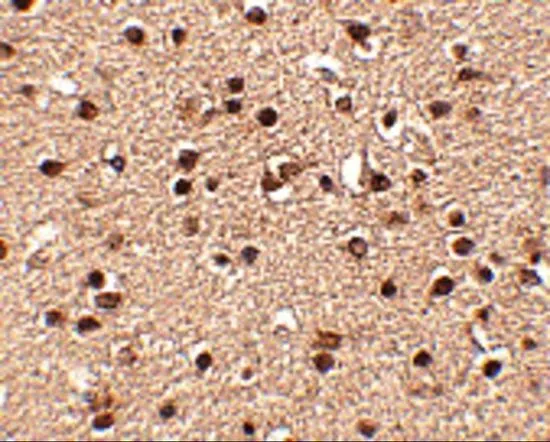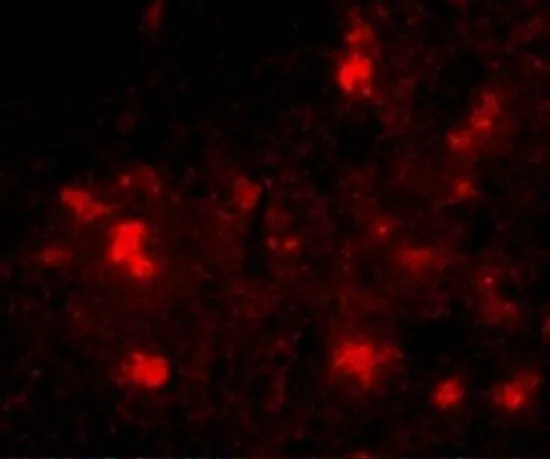
IHC-P analysis of human brain tissue using GTX85373 Dact2 antibody. Working concentration : 2.5 microg/ml
Dact2 antibody
GTX85373
ApplicationsWestern Blot, ELISA, ImmunoHistoChemistry, ImmunoHistoChemistry Paraffin
Product group Antibodies
TargetDACT2
Overview
- SupplierGeneTex
- Product NameDact2 antibody
- Delivery Days Customer9
- Application Supplier NoteWB: 1 microg/mL. IHC-P: 2.5 microg/mL. *Optimal dilutions/concentrations should be determined by the researcher.Not tested in other applications.
- ApplicationsWestern Blot, ELISA, ImmunoHistoChemistry, ImmunoHistoChemistry Paraffin
- CertificationResearch Use Only
- ClonalityPolyclonal
- Concentration1 mg/ml
- ConjugateUnconjugated
- Gene ID168002
- Target nameDACT2
- Target descriptiondishevelled binding antagonist of beta catenin 2
- Target synonymsC6orf116, DAPPER2, DPR2, bA503C24.7, dapper homolog 2, dapper antagonist of catenin 2, dapper homolog 2, antagonist of beta-catenin, dapper, antagonist of beta-catenin, homolog 2
- HostRabbit
- IsotypeIgG
- Protein IDQ5SW24
- Protein NameDapper homolog 2
- Scientific DescriptionThe Wnt signaling cascade is a conserved process in multicellular animals that plays important roles during development and can contribute to cancer and other diseases. Many members of this pathway are also expressed in the postnatal tissues such as brain. One such protein is Dact2, a member of the Dact protein family that was initially identified through binding to Disheveled (Dvl), a cytoplasmic protein essential to Wnt signaling. Dact2 is most prominent during the development of the thymus kidneys, and salivary gland. Dact2 is thought to play a role distinct from that of Dact1 with Dact2 having a greater impact on a b-catenin-independent process termed planar cell polarity/convergent-extension signaling. Furthermore, Dact2 but not Dact1 can inhibit Nodal signaling by promoting the endocytic degradation of TGF-b receptors. At least two isoforms of Dact2 are known to exist.
- Storage Instruction-20°C or -80°C,2°C to 8°C
- UNSPSC12352203





